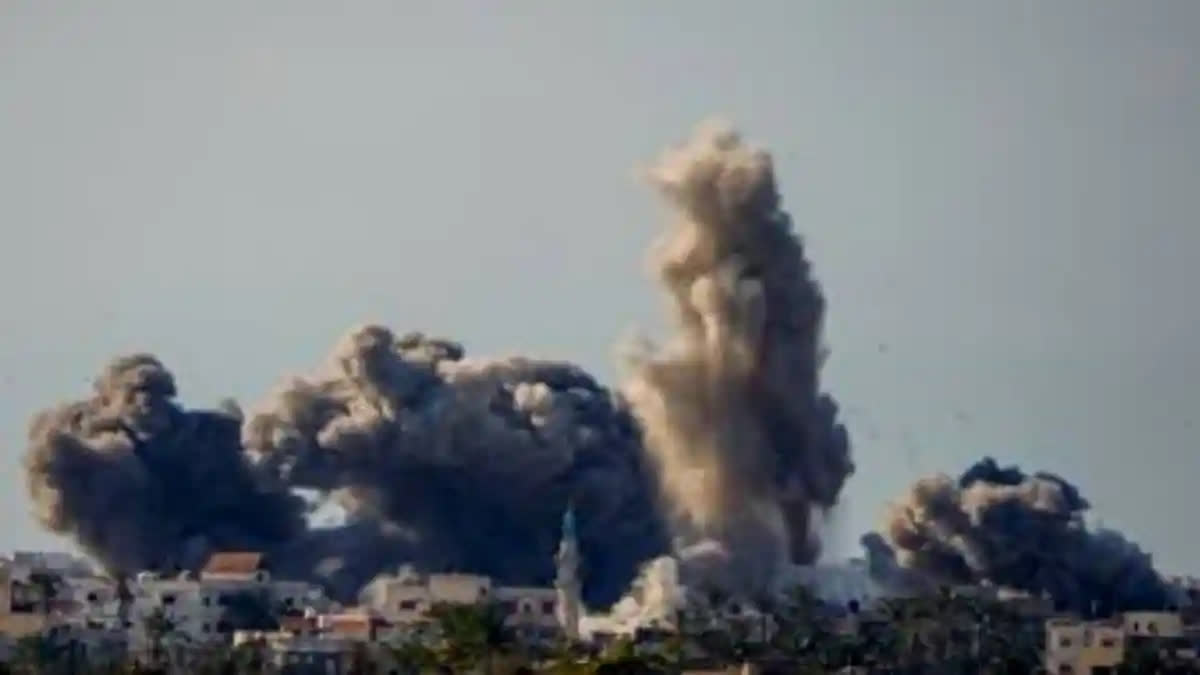Rafah: Israel has not presented specific evidence for its claim that Hamas is diverting UN aid, and its recent targeted killings of Gaza police commanders safeguarding truck convoys have made it virtually impossible to distribute the goods safely, a top US envoy said in rare public criticism of Israel.
New airstrikes in central Gaza on Saturday killed more than 40 people, including children, and wounded at least 50, according to Associated Press journalists and hospital officials.
David Satterfield, the Biden administration's special Middle East envoy for humanitarian issues, said that with the departure of police escorts following Israeli strikes, criminal gangs are increasingly targeting the truck convoys carrying badly needed aid. He said the lawlessness as well as regular Israeli protests at entry points by those opposed to aid going into Gaza have disrupted delivery.
We are working with the Israeli government, the Israeli military in seeing what solutions can be found here because everyone wants to see the assistance continue, Satterfield told the Carnegie Endowment for International Peace on Friday. A solution "is going to require some form of security escorts to return. Satterfield said that Israeli officials have not presented specific evidence of diversion or theft of UN assistance, but that the militants have their own interests in using other channels of assistance ... to shape where and to whom assistance goes.
Even before the latest setback, the US has said aid reaching Gaza is woefully inadequate. More than half of Gaza's 2.3 million people are packed into the southern city of Rafah, on the border with Egypt, having heeded Israeli evacuation orders. Yet nowhere is safe, with Israel also carrying out airstrikes in Rafah.
Israel's air and ground offensive, triggered by the Oct. 7 Hamas attack on Israel, has killed nearly 29,000 Palestinians, according to health authorities in the Hamas-run enclave. It has caused widespread destruction, displaced some 80 per cent of the population and sparked a humanitarian crisis. Rafah area residents say it's common for groups of children and teenagers to try to stop trucks as they enter Gaza and to grab supplies.
On Friday, police opened fire after a crowd charged toward an aid truck that had emerged from the Rafah crossing with Egypt. Wael Abu Omar, a spokesman for the local Crossings Authority, said one person was killed.
Israel has alleged repeatedly that Hamas is diverting aid, including fuel, after it enters Gaza, a claim denied by UN aid agencies. Last week, an Israeli airstrike on a car killed three senior police commanders in Rafah, the first entry point for aid deliveries. Two other officers were killed in another strike. The police force is controlled by the Hamas-run Interior Ministry, but Satterfield noted that it also includes those who joined before Hamas seized Gaza in 2007.
Israel has said it is determined to expand its ground combat to Rafah, portraying it as the last significant stronghold of Hamas fighters, but has not given a timeline. Addressing international concerns, Israel has said it would develop a plan to evacuate civilians before invading the southern city. US President Joe Biden has urged Israel not to carry out the operation without a credible plan to protect civilians and to instead focus on a cease-fire, while Egypt has said such an operation could threaten diplomatic relations between the countries. Many other world leaders have issued similar messages of concern.
Israel has said it has no plans to force Palestinians into Egypt. New satellite photos, however, indicate that Egypt is preparing for that very scenario. The images show Egypt building a wall and leveling land near its border with Gaza. Egypt has not publicly acknowledged the construction. Two senior Egyptian officials said Saturday that Egypt is building additional defensive lines in an already existing buffer zone. They spoke on condition of anonymity because they were not authorized to discuss details with the media.
The buffer zone, which Egypt built in recent years as part of its battle against an Islamic State group insurgency, is 5 kilometers (3 miles) from the border. It was meant to prevent weapons smuggling to and from Gaza through underground tunnels. Authorities said they destroyed over 1,500 tunnels over the years.
The newly fortified zone is not intended to shelter Palestinians fleeing Gaza, said Diaa Rashwan, the head of the State Information Service. The Israeli military launched its war in response to the Oct. 7 attack that killed some 1,200 people in Israel and took 250 others hostage. The Gaza Health Ministry on Saturday raised the overall death toll in Gaza to 28,858, saying the bodies of 83 people killed in Israeli bombardments were brought to hospitals in the past 24 hours.
The count does not differentiate between combatants and civilians, but the ministry says two-thirds of those killed are women and children. More than 68,000 people have been wounded, including 11,000 who need urgent evacuation for treatment outside Gaza, it said. In recent weeks, Israel's military has focused on Khan Younis, Gaza's second-largest city and a Hamas stronghold. The city's Nasser Hospital has been portrayed by the military as a Hamas hideout and as one of its last targets in Khan Younis.
The army said Saturday that it had arrested 100 suspected Hamas militants at the hospital. Israel's defense minister has said at least 20 of those detained had been involved in the Oct. 7 attack. The Health Ministry said troops had turned the hospital into military barracks" and detained a large number of medical staff, without providing details.
Israel says it does not target patients or doctors, but staff say the facility is struggling under heavy fire and dwindling supplies, including food and water. Nour Abou Jameh was among the thousands sheltering at Nasser Hospital who were forced to leave in the past week. Shooting and shelling was coming from all directions and even around the hospital, Jameh said. When we left at night, bodies were in the streets, and even tanks moved on them and crushed them.
Read More



